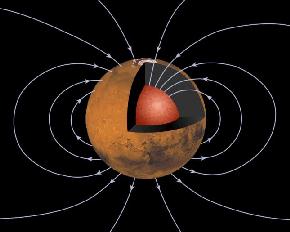This image illustrates the magnetic field of the planet.
Click on image for full size
Image from: NASA/JPL
Mars Global Surveyor Magnetometer findings
An important new result from the Mars Global Surveyor (MGS) mission is the definite confirmation of the presence of a magnetosphere around Mars.
Previous missions did not make really good measurements of the Martian magnetic field. Finding a magnetic field helps scientists understand where the magnetic material of Mars resides, and a little bit about the Martian evolution. It also answers one of the fundamental questions the Mars Surveyor Program set out to resolve.
Scientists used to think that because the Martian surface contained so much iron, and the Martian magnetic field was so weak, that the early history of Mars was not sufficiently warm for the interior of Mars to separate into an iron core covered by surface layers. A large molten iron core, such as that of the Earth, would generate a strong magnetic field. Thus, iron must have stayed mostly on the outside layers of Mars, making the surface red with rust.
Recently, Mars Pathfinder returned a measurement which suggested that Mars has a large iron core. Therefore, if the core of Mars is large and composed of iron as the Mars Pathfinder measurement shows, and there definitely is a magnetic field generated inside, as the Mars Global Surveyor measurement shows, then this theory about the evolution of Mars may not be completely correct.
You might also be interested in:
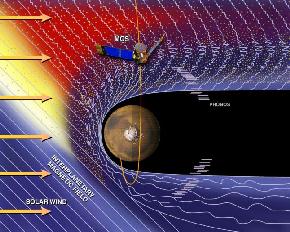
An important new result from the Mars Global Surveyor (MGS) mission is the definite confirmation of the presence of a magnetic field near Mars. The magnetic field leads to the formation of a magnetosphere,
...more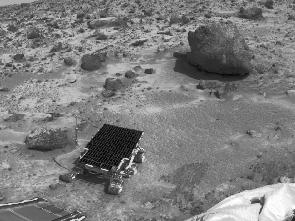
Because of the failure of the Mars Observer (MO), NASA planned a new Mars Surveyor Program. The Surveyor Program was designed to explore all of the things the MO was suppose to, and a lot more. The Surveyor
...more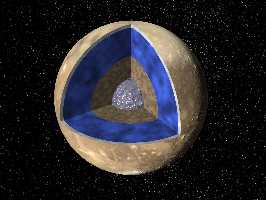
Differentiation is a scientific term which really means "to separate". In their earliest history, elements which made the planets would part into separate regions, if the planet were warm enough. This
...more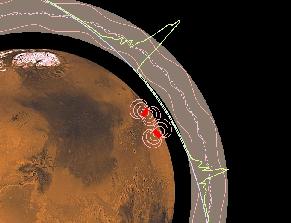
The Martian ionosphere is a layer of gas that is very high up above Mars and is composed of ions and electrons. It extends from about 75 miles up to several hundred miles up above the surface. It is shown
...more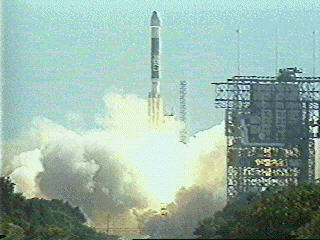
It has been more than 30 years since America's first exploratory missions to Mars. Here are some of the instruments carried onboard Mars Global Surveyor (called MGS for short). Many of these instruments
...more
These are some of the initial findings of Mars Global Surveyor. There definitely is a magnetosphere near Mars. suggests scientists must rethink theories about the evolution of Mars. Geologic features at
...more
These are the findings of Mars Pathfinder. Rounded Pebbles, Cobbles and possible Conglomerates were found - a result from analysis of the landing site, the rocks, and the soils. showed that there were
...more


